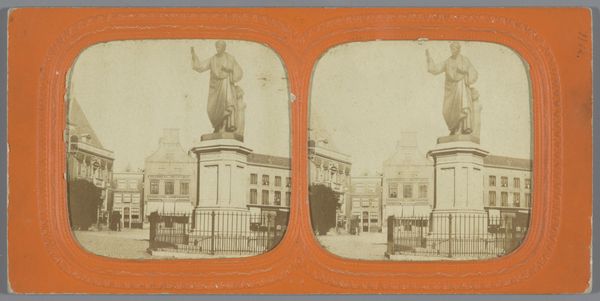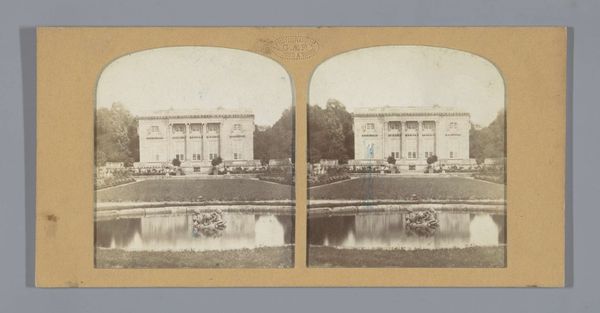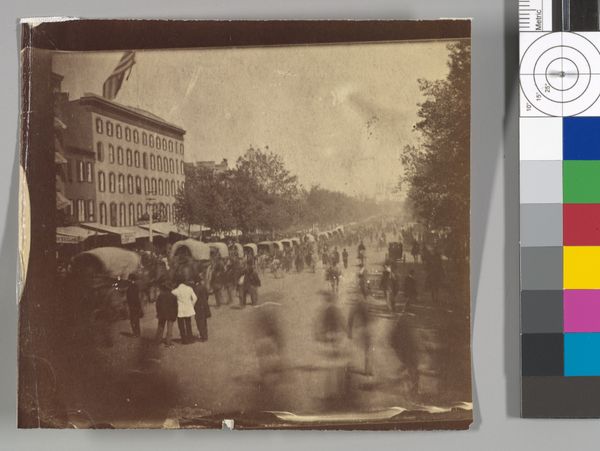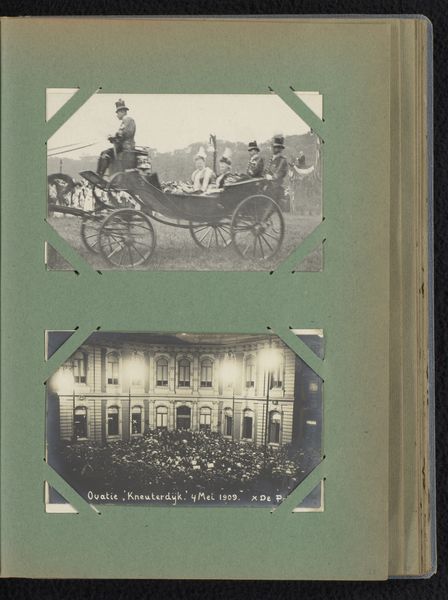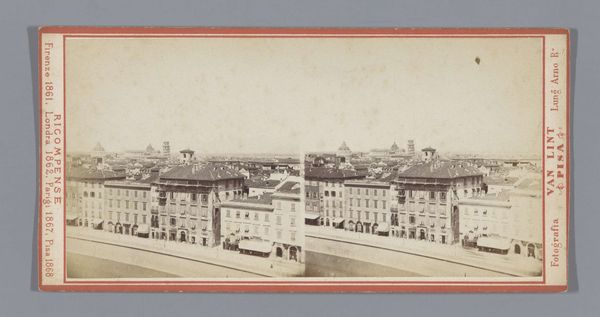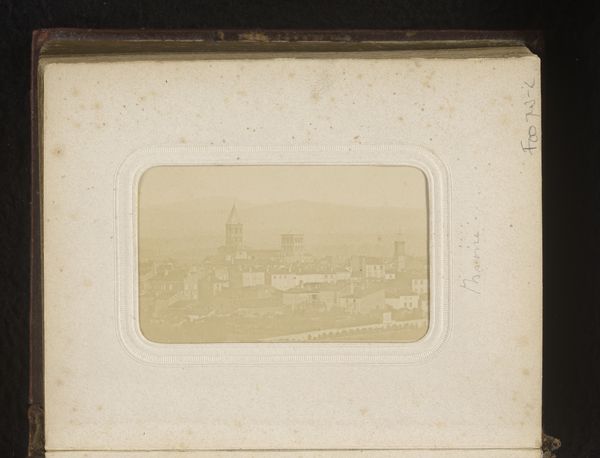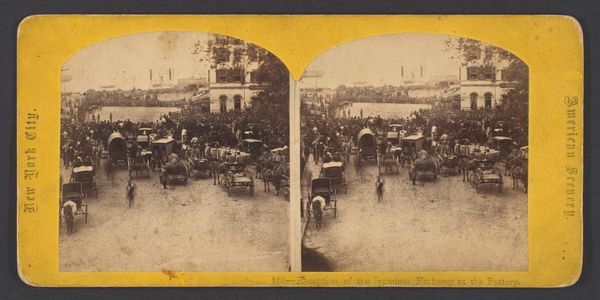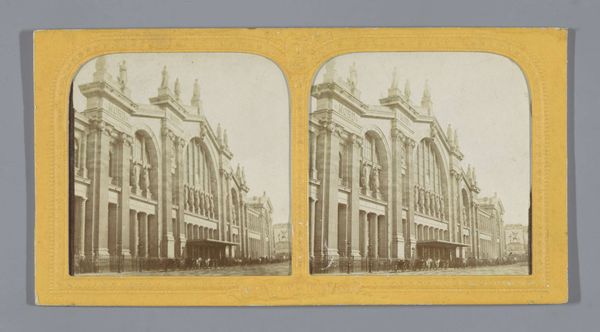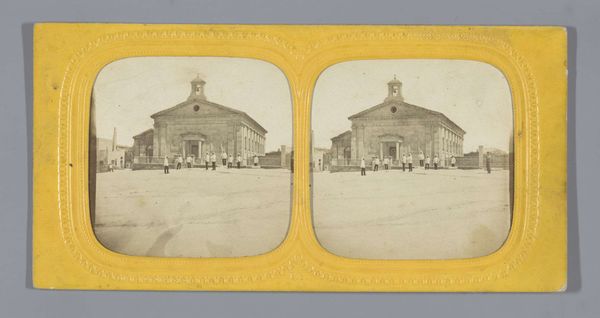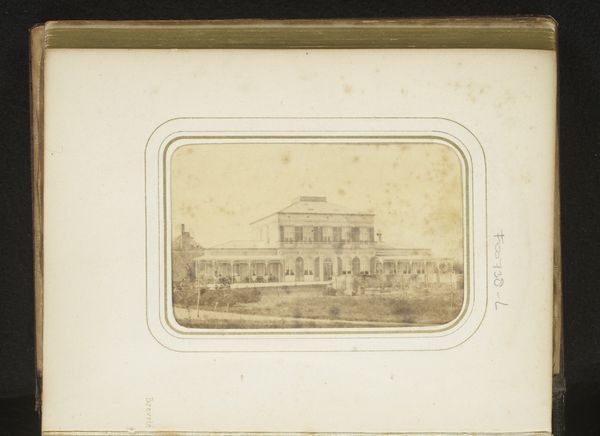
daguerreotype, photography
#
16_19th-century
#
daguerreotype
#
photography
#
united-states
#
cityscape
#
realism
Dimensions: 6.9 × 5.6 cm (sight, each image); 15.4 × 24.4 × 1.1 cm (open case); 15.4 × 12.2 × 2 cm (case)
Copyright: Public Domain
Curator: This is an untitled work, a daguerreotype to be precise, by Robert H. Vance, dating back to 1853. It pictures Portsmouth Square in San Francisco. Editor: The muted tones lend the scene a rather melancholic air, don’t you think? The sharp delineation of forms against the blurred background creates an interesting contrast. The use of positive and negative space directs the viewer's focus onto the architecture. Curator: Indeed. This piece captures a specific moment in San Francisco’s history, during the height of the Gold Rush. The bustling square wasn't merely a geographical location; it became a socio-political stage where identities clashed and fortunes were pursued. Editor: Observe how the architectural features command the photograph's spatial organization, and consider how Vance deliberately plays with the orthogonal lines to construct depth, directing the eye. This calculated strategy invites interpretation—is he mirroring civic solidity? Curator: Considering the backdrop of rampant, often chaotic, development driven by the Gold Rush, such solidity might have offered some sense of stability. Simultaneously, one must account for whose stability was being prioritized during such volatile socio-economic conditions. Editor: Quite interesting. Focusing on formal concerns though, note how light delicately emphasizes each detail on the architectural front—classical allusions meet photography's nascent technology—resulting in a rich sense of detail. Curator: The daguerreotype technique itself is laden with colonial and racial implications. While we admire the clarity it offers, it's essential to ask who had access to this technology and whose stories were told—or left untold—through its lens. It brings forward themes of dispossession alongside development. Editor: Fair point, and it illustrates just how essential interdisciplinary contexts have become to appreciate photographic endeavors like this one, enabling novel approaches into semiotic potentials of subject and context. Curator: This intersectional reading helps to unpack this work in its many aspects of social, political, and cultural forces present at its moment of creation, not just as a visually stunning image. Editor: So much to see, when you know how to really look.
Comments
No comments
Be the first to comment and join the conversation on the ultimate creative platform.

